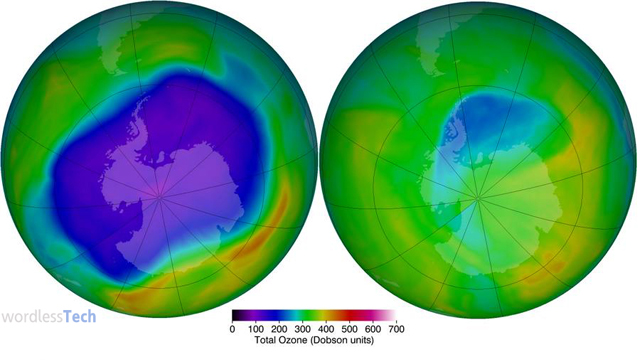
Remember the ozone hole? You know, the hole in that part of the atmosphere that shields us from UV radiation? It was big news all those years ago when the hole was growing due to the use of chlorofluorocarbons (CFCs). Ozone molecules, made up of three oxygen atoms, are particularly vulnerable in cold places like Antarctica, so CFCs had the most damaging effect there. This time it’s good news — the ozone hole over Antarctica, not the layer itself, is at its smallest in 10 years.

This news came on February 8 from the European Space Agency‘s (ESA) Met Op weather satellite, which has specialized equipment used to detect the concentration of ozone. The ozone hole itself matters because it puts people in the southern hemisphere at a greater risk of absorbing more UV radiation. The news that the ozone hole is at its second smallest in 20 years is a great sign–not only does it show that the phase-out of CFCs is working, but it shows that the hole may close entirely by the middle of the century.
CFCs were discontinued internationally after their damaging effects on the environment became apparent, and the effect from the lack of use is significant. CFCs remain in the atmosphere for a long time, so it may be a while before they’re gone completely, but this is a great start. It’s nice to have a bit of positive environmental news, since that arena is usually pretty doom-and-gloom, not to mention blame-heavy. For now, we can take solace in the fact that we’re not killing the planet quite as quickly as we used to be.